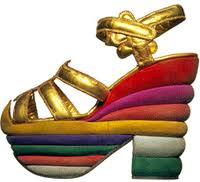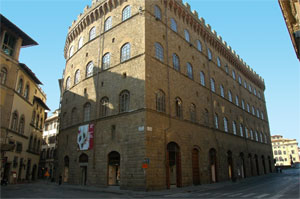Situated in Florence, on the basement of Palazzo Spini Feroni, Via Tornabuoni n. 2, the museum was opened to the public in 1995 by the Ferragamo family, in an effort to illustrate Ferragamo’s artistic qualities and the important role he played in the history of shoe design and international fashion. Besides photographs, patents, sketches, books, magazines and wooden lasts of various famous feet, the museum boasts a collection of draws 10,000 models designed by Ferragamo from the end of the 1920’s until 1960, the year of his death.
The shoes, displayed on a biennial rotation, are chosen each time according to specific themes that deal with new issues and allow for new fields of inquiry. The shoes, all works of refined craftsmanship, their design and materials, unveil the mind of an artist who was always in touch with the cultural mood of the time. Salvatore often searched for and found ideas, inspiration and collaboration from the leading artists of his day.
Salvatore Ferragamo was born in 1898 in Bonito, near Naples, the eleventh of 14 children. After making his first pair of shoes at age nine, for his sisters to wear on their confirmation, young Salvatore decided that he had found his calling. He always had a passion for shoes. After studying shoemaking in Naples for a year, Ferragamo opened a small store based in his parent’s home. In 1914, he emigrated to Boston, where one of his brothers worked in a cowboy boot factory.
After a brief stint at the factory, Ferragamo convinced his brothers to move to California, first Santa Barbara then Hollywood. It was here that Ferragamo found success, initially opening a shop for repair and made-to-measure shoes, which soon became prized items among celebrities of the day, leading to a long period of designing footwear for the cinema. However, his thriving reputation as ‘Shoemaker to the Stars’ only partially satisfied him. He could not fathom why his shoes pleased the eye yet hurt the foot, so he proceeded to study anatomy at the University of Southern California. After spending thirteen years in the United States, Ferragamo returned to Italy in 1927, this time settling in Florence. In Florence, he began to fashion shoes for the wealthiest and most powerful women of the century.
The Building:
Palazzo Spini Feroni is a Medieval palace, built by Geri Spini, a wealthy merchant and banker to Pope Boniface VIII, in 1289. Over the centuries it changed hands several times, from the Spinis to the Guasconis and then to the Bagnano and Feroni families. In 1846 the palazzo was acquired by the City of Florence and from 1860 to 1870 when Florence was the capital of Italy, it was the seat of the City Council. In 1881 it was sold to the Cassa di Risparmio and came under private ownership when Salvatore Ferragamo purchased it in 1938 as the headquarters of the company and his own workshop. The building was restored in 2000 and now proudly shows its masterpieces of seventeenth and eighteenth century Fiorentine art, including frescoes by Bernardino Poccetti in the chapel. The lower, or basement, level where the museum is located bears witness to the building’s Medieval originals. Over the centuries it had been used for many purposes and in the early twentieth century it was home to one of the city’s most famous antiques galleries.
The Opening Hours of the museum are 10:00 to 18:00 and closed on a Tuesday – in addition, during August, the museum is closed on a Sunday. The entrance fee is €5.00 and free for over those over 65 and under 10 years.
The proceeds from the entrance fees go towards funding scholarships for young shoe designers.



